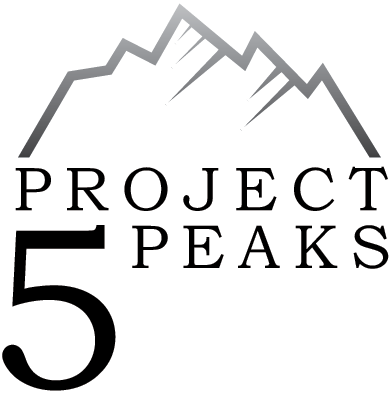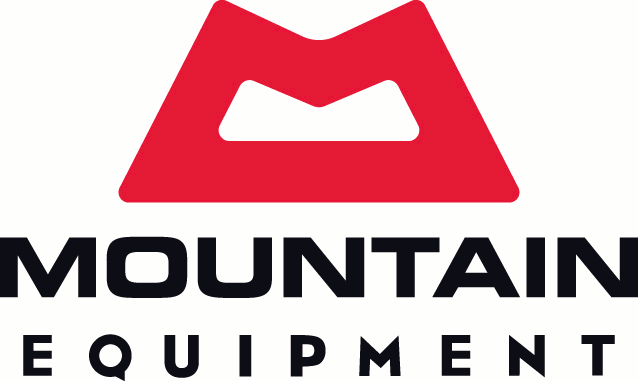It's all about the gear!
Story by Martin Vorel
Choosing the right gear is more than having just a 'good' jacket. It's about quality, weight, warmth, breathability, personal preference and how everything falls together into place. You need think about your layering system, what do you like and what works? Choose your socks, choose your fabrics, choose your snacks, choose foods and of course, keep all of that as light as possible! As a team we are really happy to have great partners to help us make the right choices. In return we kick their products asses to see if it works!
I wouldn't tell my mom, but on Peak Lenin we had the idea that in some cases you could get away with the stuff you normally take on your coldest Alpine winter days. This year we knew that that idea really needed to go, as Peak Pobeda and Khan Tengri are both notorious for their bad weather and extreme cold. Especially Pobeda (7.439m) requires gear that can sustain polar-like conditions and very high winds. Not to mention the fact that Khan Tengri is the northernmost 7.000m mountain. Most climbers know that the weather on these mountains is considered worse than on many Himalayan 8000+ peaks. So, yeah...it was clear we needed to up our gear-game!
The need for feet
Arriving at basecamp our eyes where set on Khan Tengri and we couldn't wait to go! Just like last year you see all these sunburned faces with hollow eyes. They're all telling the same story, all trying to make it to stand on top. But this year it was different, these mountains are different. We listened to stories of people that didn't return and saw the first summiteers of the season coming down from their summit with frostbite on their toes, fingers and face. We knew that we made the right decision on taking our big Asolo boots! A double insulated boot, waterproof with extraordinary warmth. 400g of Primaloft above its sole and another 200g within the inner boot. We knew our toes would be toasty warm! For our hikes around base camp, but also for heavy loads to ABC, we used our Jumla's. These superlight approach shoes are superlight and perfect as a secondary boot.
Layers first!
When it comes to clothing a good layering system is vital! The differences in weather are just really extreme in high altitude. At night it's freezing cold and when the wind picks up your world changes. But you have to take into account that it's not just about keeping you warm, as for most of the time it's just blazing hot up there! Both Gijs and myself learned the hard waywhen we got terribly sunburned on our way to C3. That's why Allert puts on sunblocker like 500 times a day....it's that or he just really likes lotion to keep his skin moisturized, we really don't know.
Back to the subject of clothing, Mountain Equipment provided us with a complete layer system which really worked well for all of us. We all like the superwarm Gasherbrum down jacket, and of course we also have our personal favorites. I especially liked the thin midlayer fleece, because it's so versatile. On a hot day it keeps the sun out, the breathability is perfect and at the same time it's part of your cold day setup! Allert practically didn't take of his softshell trousers and Gijs is quiet fond of his wooly chewbacca-vest! In the end you're constantly changing between softshells and downclothing based on daytime, weather and altitude. You basically don't know what to expect, so you prepare for the worst. For us things worked out perfect, on our summitday the weather was absolutely stunning. It was windless, the sun was shining and we could climb in their softshell jackets well above 6.700m. Only putting on our down stuff in the early hours of the day and then again above 6.900m due to high winds up there.
Shelter for the storm
We choose to take our own tents instead of renting the big expedition tents in the BC. So we took three 3-person tents to keep one of them as a BC-tent for our equipment, one as a ABC-tent and use the lightest one during the climb.
After we summited a big storm pinned us down in C3 (5.800m) for a few days. We knew/hoped our tent was rock-solid, but at one point we didn't know if the walls could sustain the extreme gusts of wind and snow. In the middle of the night the tent of the nearby Spanish team collapsed. At the same time we were hunkered down against our own tent walls to keep it up, all wearing our full-downclothes. In the end the tent did his job and we all came out fine, including the Spanish!
So you can imagine that in the days when we where pinned down the night-times were pretty intense. We couldn't go down during day because of avalanche danger. So what do you do when you can't go outside and stuck in a tent with two smelly Dutch guys? You sleep, make bad jokes and sleep a little bit more. Especially Gijs has the superpower to take more than eight naps on a single day...! But it's not just all fun and games, a lot of thought has also gone into in the 'sleeping-department'. All of us used comfortable inflatable sleeping mats down in BC and C1. Above C1, Allert and Gijs played it safe and took classical foam mattress to higher camps to avoid problems with potential puncture. Martin kept his inflatable high-rise mattress and was praying the entire time.
We took our Iceline sleeping bags which proofed well in Camp 3 (6.100m) on Peak Lenin. It's the middle model from ME expedition sleeping bags line and we thought it should provide enough warmth, even on Pobeda Camp 5 (6.900m). This sleeping bag offers a good sleep at -30 C temperature and weights well under 2kg. In the end it was a bit too warm when sleeping around or just under 0 degrees - we sometimes had to sleep literally above or next to sleeping bag. Cooking equipment consisted of all-in-one solutions which integrates stoves and cookware from Jetboil. As per the gas itself, we had quite a regular daily consumption all along the way. We used a bit less than 1 medium size (230g) gas bottle a day in the lower camps and slightly more in Camp 3 in 5.800m.
Climbing gear
We knew that this year's climb(s) would be a lot more technical than the one we did on Lenin. We choose superlight harnesses with standard glacier equipment and a jumar, nothing more, nothing less. You compromise, you want to be fast and light. On Khan Tengri there are sufficient fixed ropes in the crevassed section between C1->C2 icefall, as well as on the long summit ridge. And so, we didn't take many ice screws, nuts, friends - only a rope.
In general this lightweight approach paid off, however there's one thing we need to rant about: our crampons. All of us took lightweight aluminum crampons with steel frontpoints to save more than 0,5 kg on every step. Unfortunately, they didn’t prove to be a trustworthy partner! We couldn't adjust the length properly to fit well with our expedition boots and this resulted in several unexpected disconnections. Gijs his pair even completely broke down during the summit push. He was left with one functional crampon, but he still managed to summit!
Stay organized
Once we got back in basecamp it was time to chill, but also to get organized. We charged our radios, satellite phone, cameras and headlamps with solar panels from Biolite. Last but not least, we used a lot of accessories from SeaToSummit. Ranging from the big duffle 130L bags for transport and safe storage of all our gear down in BC, to hand sanitizers and baby wipes for hygiene high up on the mountain. All our baggy cloth was compressed in very lightweight sacks, which allowed compression up to 1/3 of original packed size.




